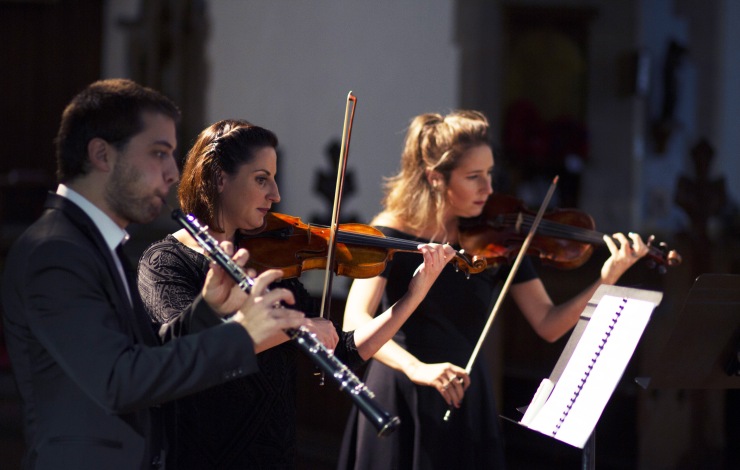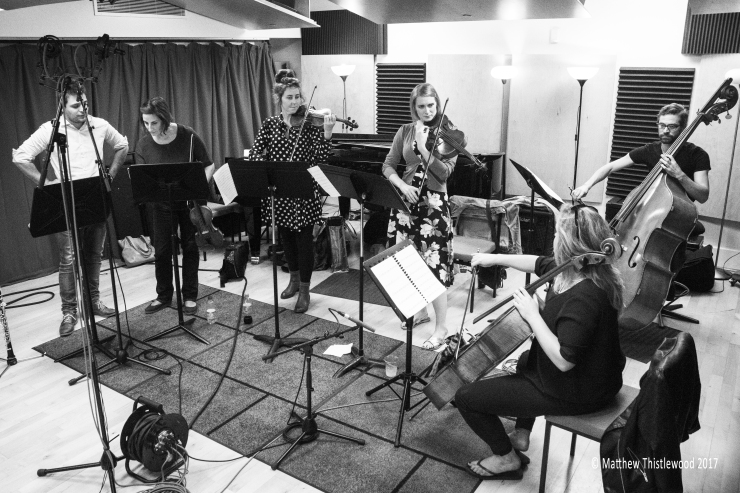Playlist
Charlie Barber – Electric Mains Hum (2018)
Henry Purcell – Grand Dance, from King Arthur, Act V (1691)
G B Pergolesi – Stabat Mater dolorosa (1736)
Charlie Barber – Tuning to Radio Station, No 1 (2018)
Charlie Barber – Piazza Navona (2009)
Michael Nyman – An Eye for Optical Theory (1982)
Charlie Barber – Radio Message for Orpheus, No 1 (2018)
Tomaso Albinoni – Oboe Concerto in Bb, 1st mvt, Allegro (1722)
Henry Purcell – Passacaglia, from King Arthur, Act IV (1691)
Arcangelo Corelli – Concerto Grosso, Op 6, No 8, II mvt (1714)
Charlie Barber – Tuning to Radio Station, No 2 (2018)
Antonio Vivaldi – Oboe Concerto in D minor, RV 454, 1st mvt (1725)
Charlie Barber – Radio Amore No 1 (2018)
Arcangelo Corelli – Sarabanda, Oboe Concerto (arr. Barbirolli, 1945)
Matthew Locke – Fantazie for 2 bass viols (1652) arr. Barber
Michael Nyman – Chasing Sheep Is Best Left to Shepherds (1982)
Barbara Strozzi – ‘Hor che Apollo’ from Arie op.8 (1664)
Charlie Barber – Radio Message for Orpheus, No 2 (2018)
Charlie Barber – Radio Amore No 2 (2018)
G B Pergolesi – Allegro, 2nd mvt, Oboe Concerto (arr. Barbirolli, 1935)
Charlie Barber – Tuning to Radio Station, No 3 (2018)
Charlie Barber – Passacaglia (2013)
Charlie Barber – Allegro for Strings (2018)
Antonio Vivaldi – ‘Vedro con mio diletto’ from Giustini (1724)
Charlie Barber – Allegro on a Theme by Handel (2016)
Charlie Barber – Radio Amore No 3 (2018)
Charlie Barber – Epilogue: Love Is… (2018)


Eclectic Welsh composer Charlie Barber’s work is often on the intersection of the audio and the visual, but in this touring production for Sound Affairs his focus as Artistic Director is entirely on the music, the notion being to simulate a late-night radio show in a live music mix-tape.
The idea is an attractive one, with the segueing from piece to piece being sometimes facilitated by Barber’s (composed) Tuning to Radio Station interludes for strings, and overall by a harmonic structure which leads seamlessly and elegantly through the circle of fifths.
The sequence starts with Barber’s Electric Mains Hum before the musicians come on stage, and this – with its iconic snippet of the BBC radio shipping forecast included – does effectively set the mood for the central conceit of Radio Amore. The solemnity of Purcell’s ‘Grand Dance’ from King Arthur and the serenity of Pergolesi’s Stabat mater dolorosa are followed – after an interval from Tuning – by Barber’s Piazza Navona, evoking the bubbling fountains of Rome and moving towards the tonality and outburst of Michael Nyman’s An Eye for Optical Theory from his music for Peter Greenaway’s 1982 film The Draughtsman’s Contract.

Nyman’s music was written for larger forces, but in this chamber setting the five string players and oboist were able to reveal the details within this syncopated reconstruction of a baroque figure which the bombast of saxophones and horns against massed strings, piano and bass can obscure. There is lots of dance in baroque music, but it is generally contained – Nyman’s music reveals its joy, and makes players and listeners alike smile with delight.
Barber’s Radio Message for Orpheus references Cocteau’s film in which Orpheus receives messages from the underworld – or the BBC in wartime – through his car radio. It’s a neat allusion, and the rhythmic change into Albinoni’s Oboe Concerto in B flat seamless.
After music by Corelli, Vivaldi and Matthew Locke, another piece of nouveau-baroque by Michael Nyman – Chasing Sheep is Best Left to Shepherds – gave a welcome change of pace, and Barbara Strozzi’s restrained Hor che Apollo immediately after that was all the more luminous for the contrast. The throbbing transcription of the aria ‘Vedro con mio diletto’ from Vivaldi’s little-known opera Giustino was a marvel.
As the lights dimmed and the musicians played Barber’s Epilogue: Love Is, the mood became more reflective, drawing this sometimes tempestuous journey to a quiet and gentle close.
The musicians were all superb, and visibly sympathetic to one another. Those Nyman pieces, in particular, must be mighty difficult to sustain when there are only six of you, but the players showed no sign of strain. I loved the sounds of the combination of oboe and strings. The Mavron Quartet are well known and loved and Ashley-John Long, an alumnus of the Royal Welsh College of Music and Drama, no stranger to South Walian audiences. Italian oboist Michele Batani was a new voice to me and one I look forward to hearing again.
The Chapel in Abergavenny provides a fine acoustic for chamber music, and it was good to see it drawing a capacity audience of locals and those from further afield.
Cath Barton, 13 October 2018

